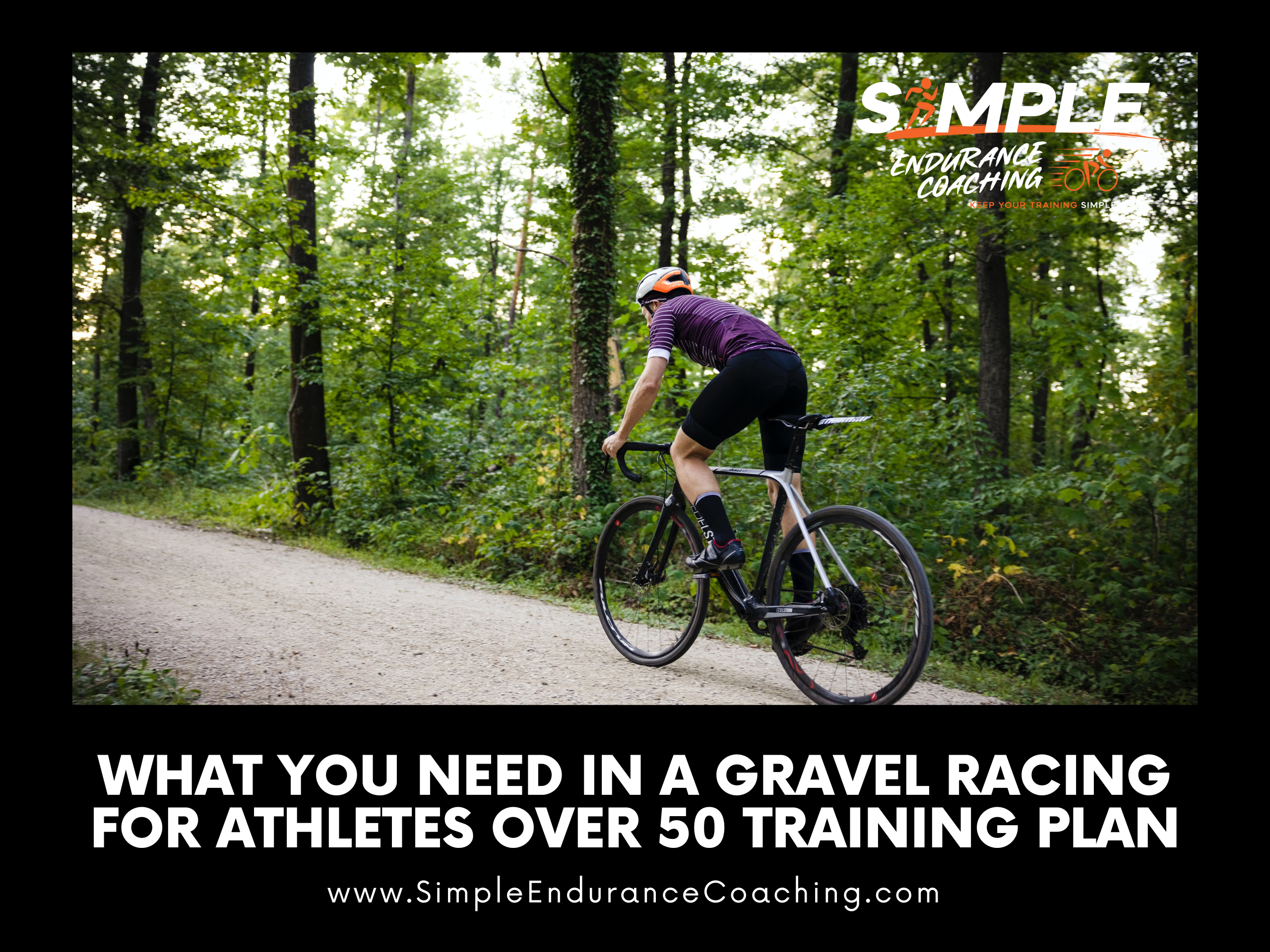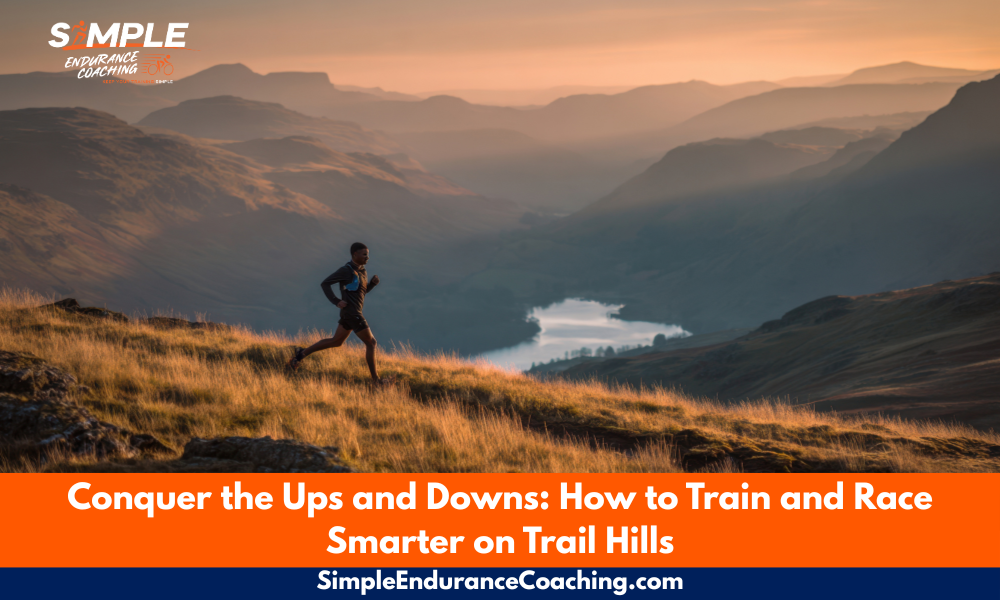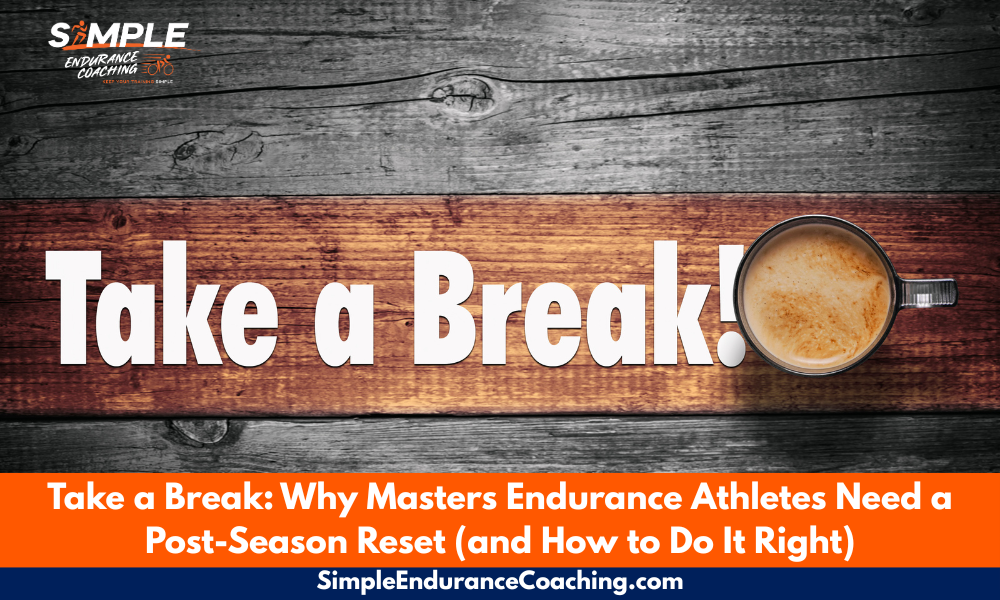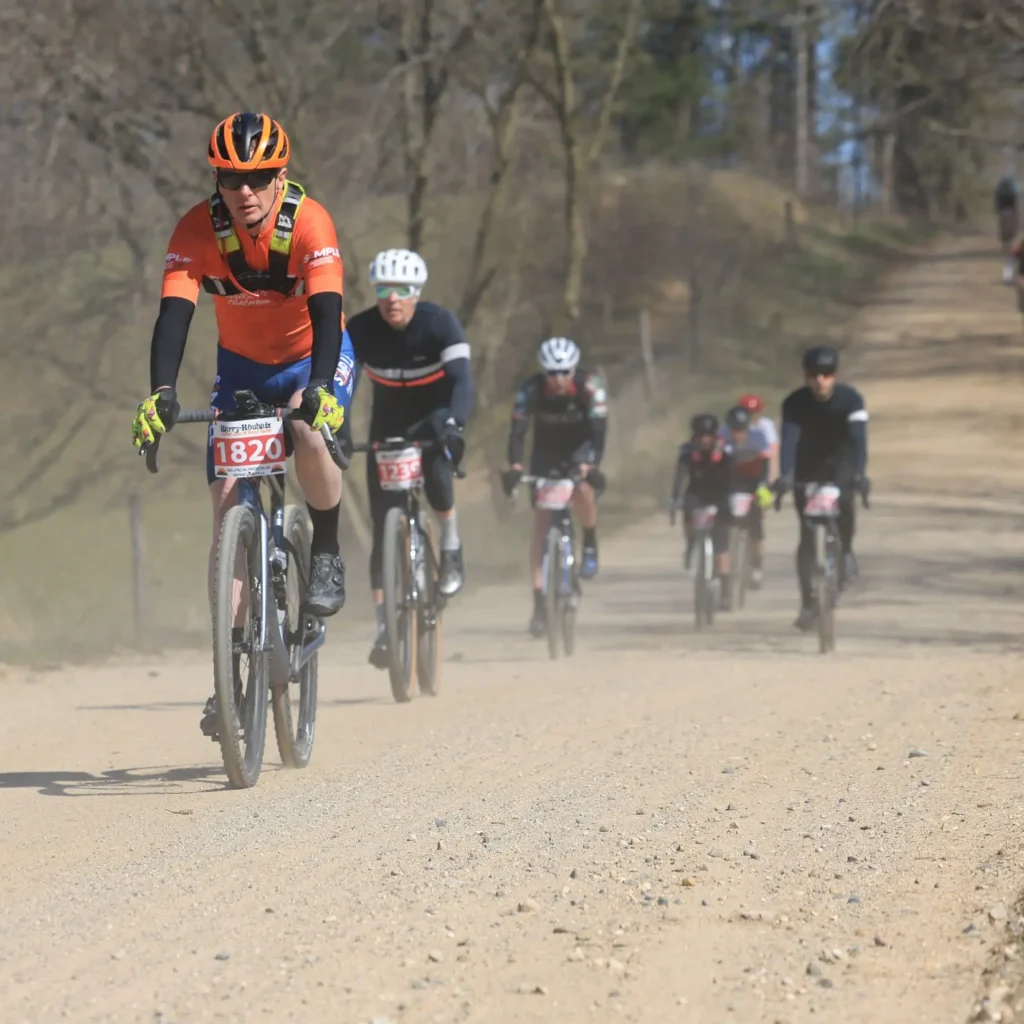What You Need in a Gravel Racing for Athletes over 50 Training Plan
Are you over 50 and looking to take on the challenge of gravel racing?
You are about to embark on an exhilarating journey that will push your physical limits and test your mental tenacity.
However, before you hit the starting line, it’s important to have a comprehensive training plan in place.
In this blog post, I’ll explore what you need in a gravel racing training plan specifically designed for male and female gravel racers over 50 years old.
From strength exercises to recovery strategies, we’ve got you covered so that you can achieve peak performance on race day after your gravel training for over 50 cyclists.

Introduction to gravel racing for riders over 50
If you’re new to gravel racing, or even if you’ve been riding for years, it’s important to have a training plan that fits your goals and schedule.
Here’s a look at what you need in a gravel racing training plan for athletes over 50.
Consider your fitness level and how much time you have to devote to training.
If you’re just getting started, it’s important to ease into things and build up your endurance gradually in your gravel training for over 50 cyclists.
On the other hand, if you’re already an experienced rider, you can probably handle a more intense training program.
Choose your race adventure
Next, think about the kind of race you want to do.
There are many different gravel races out there, from short and fast sprints to long and grueling endurance events.
Choose a race that matches your fitness level and interests.
Make sure you have a good support system in place.
Training for a gravel race can be tough, both mentally and physically.
It’s important to have friends or family members who can encourage you and help you stay motivated.
Physical requirements of a gravel racing for athletes over 50 training plan
A gravel racing training plan should first and foremost focus on your physical requirements, meaning what do you need to work on.
The plan should be designed to increase your strength, endurance, and power.
It should also include a healthy diet and plenty of rest.
The first part of any gravel training for over 50 cyclists is always the base phase.
This is when you build your foundation of strength and endurance.
The base phase should last for 4-8 weeks, depending on your fitness level.
During this time, you should focus on long rides at a moderate pace.
You should also do cross-training, such as swimming or running, to help improve your overall fitness.
Improve performance with race-specificity training
After the base phase is complete, you can begin to focus on more specific goals.
For instance, if you are trying to increase your power, they can do some hill repeats or interval training.
If you are trying to improve your endurance, you can do longer rides at a steady pace.
And if you are trying to lose weight, you can focus on eating a healthy diet and doing some moderate exercise most days of the week.
No matter what the goal is, it’s important that you stick to the training plan and don’t overdo it.
Training for gravel racing is not easy, but it can be extremely rewarding.
Mental preparation for gravel racing for cyclists over 50
Gravel racing can be a mentally tough sport.
The key to success is to be prepared mentally as well as physically.
Here are some tips to help you get into the right mindset for gravel racing:
-Visualize your race: See yourself succeeding at various points throughout the race. This will help increase your confidence and motivation on race day.
-Create a positive mantra: Repeat a positive phrase to yourself during difficult moments in the race. This could be something like “I can do this” or “I am strong”.
-Focus on your breathing: Proper breathing helps improve endurance and can also help prevent panic attacks during the race.
-Think about your form: Make sure you are staying relaxed and riding with good form, even when you are tired. This will help you conserve energy and ride more efficiently.
These are things you can practice with your training plan for gravel racing
Gear selection tips for gravel racing
There are a few key things to keep in mind when selecting gear for gravel racing.
First, consider the terrain you’ll be racing on.
If it’s mostly flat, you’ll want to focus on gearing that’s light and fast.
However, if there are a lot of hills, you’ll want to make sure you have gears that can help you power up them.
Second, think about the conditions you’ll be racing in.
If it’s likely to be hot and dry, you’ll want to make sure your bike and gear can handle those conditions.
However, if it’s likely to be wet and muddy, you’ll need to make sure your bike and gear can stand up to that as well.
Consider your own fitness level and what kind of effort you’re hoping to put out during the race. If you’re aiming for a fast time, you’ll want to make sure your gear is up to the task.
However, if you’re just hoping to finish the race, any decent bike and gear will do.
Keep these factors in mind when selecting gear for gravel racing and you’ll be sure to have a great experience out on the course.
Your gravel training for over 50 cyclists should include trying out all your racing gear before the race.
Gravel racing is great for cyclists over 50
Gravel riding is a type of cycling that has seen a surge in popularity in recent years.Unlike traditional road cycling, which is mostly done on pavement, gravel riding takes place on unpaved surfaces like dirt roads, forest trails, and even single-track mountain biking trails.
There are many benefits to gravel riding, both for athletes and recreational cyclists alike.
It is an excellent way to build mental toughness and grit, as the constantly changing terrain keeps riders on their toes and forces them to stay focused.
Recreational cyclists will enjoy the challenge that gravel riding provides, as well as the opportunity to explore new areas that are off the beaten path.
The slower pace of gravel riding also allows riders to take in the scenery and enjoy the fresh air, something that can be hard to do when racing at high speeds on pavement.
Plus you get to see different parts of the country on the back roads and forest trails.
Building your gravel racing for cyclists over 50 training plan step by step
Assuming you have a solid base of aerobic fitness and are able to complete long endurance rides, the first step in creating a training plan for gravel racing is to focus on improving your power.
This can be done by completing short, intense efforts on the bike followed by active recovery as part of your gravel training for over 50 cyclists.
For example, you might do a set of 10 one-minute hill repeats with two minutes of easy spinning between each repeat.
Once you have increased your power, you can begin to focus on more specific gravel racing skills such as drafting and cornering.
To practice drafting, find a friend or group of friends to ride with and take turns riding in the lead position.
As you become more comfortable drafting, you can begin to increase the intensity of your efforts.
Cornering is another important skill to master when racing gravel.
To practice, find a safe location away from traffic where you can ride around corners at different speeds.
Pay attention to how your bike feels at different speeds and lean into the turn without overcompensating.
Both power and skills are important when racing gravel, but the key is to not overdo it.
Start with shorter rides and gradually increase both the distance and intensity as your body adapts.
Remember to listen to your body and give yourself adequate time to recover between rides.
With a little patience and attention to detail, you’ll be ready to take on any gravel race!
Motivation strategies to keep you going
When you’re trying to stay motivated during training, it’s important to have a few strategies in place to keep you going.
Here are some motivation strategies to keep you going:
- Set realistic goals for yourself and your training plan. When you have specific goals in mind, it’s easier to stay motivated and on track.
- Find a training partner or group to help keep you accountable. Training with others can help push you harder and keep you more focused.
- Make a list of reasons why you’re doing this race or training plan. When you have a reminder of your motivations, it’ll be easier to stick with it when things get tough.
- Set small milestones along the way to help measure your progress. Checking off smaller goals will help encourage you as you work towards your larger goal.
- Take some time for yourself during training- make sure to schedule some rest days and recovery weeks into your plan! This will help your body (and mind) stay fresh for the long haul.
Nutrition and hydration tips for older cyclists
As we age, our bodies become less efficient at handling the stresses of exercise.This means that older cyclists need to be especially mindful of their nutrition and hydration in order to stay healthy and perform at their best.
Here are some tips to help you fuel your body properly before, during, and after your rides:
– Make sure you’re eating enough calories. Older cyclists often need more calories than they did when they were younger, so make sure you’re getting enough through your diet or by supplementing with sports drinks or energy bars.
– Stay hydrated. It’s important to drink plenty of fluids before, during, and after exercise to prevent dehydration. Sports drinks can help replace electrolytes lost through sweat.
– Choose foods that are easy to digest. Exercise can strain your digestive system, so it’s important to eat easily digested foods such as bananas, rice, or toast. Avoid high-fiber foods like beans or broccoli which can cause GI issues.
Following these tips will help you stay properly fueled during training to perform at your best on race day!
A training plan for gravel racing should always include practice with different types of nutrition and hydration.
Safety guidelines for gravel riding
When it comes to gravel riding, safety should always be a priority.
You are often in the middle of the countryside with limited cell service.
Here are some safety guidelines to keep in mind when gravel riding:
- Always wear a helmet. A fall on the gravel can cause serious head injuries, so it is essential to protect your head at all times.
- Be aware of your surroundings at all times. Pay attention to the terrain and obstacles ahead of you so that you can avoid them if necessary.
- Ride with a buddy whenever possible. This way, you can watch out for each other and help each other in case of an emergency.
- Let someone know where you are going and when you expect to return home. This is important in case something happens and you need to be located by emergency responders.
Cyclists over 50 can use gravel racing as a challenge
Gravel racing is a great way for athletes over 50 to challenge themselves and stay in shape.
With the right training plan for gravel racing, you can set yourself up to successfully compete in gravel races.
A good plan should include an appropriate mix of endurance training, strength training, and recovery activities like yoga tailored to your individual goals.
Additionally, it’s important to have realistic expectations as well as the right gear that will help you get through long days in the saddle so that you can achieve maximum performance on race day.
Here are three things to consider about a training plan for gravel racing when you’re over 50:
- Any training plan for gravel racing has to include a lot of long easy endurance rides to prepare your aerobic system.
- Gravel training for over 50 cyclists needs to include work on nutrition and hydration
- Training plans for gravel racing for riders over 50 should also include work on mental toughness skills.
Need more about gravel racing for athletes over 50 training plan??
Sign up for Virtual Coffee so we can discuss your goals, ask questions, and talk about making your endurance training more effective, fun, and Simple.
Get a free Core Strength and Stability training video when you opt-in to receive my weekly blog posts about what works in endurance sports.
Paul Warloski is a:
- USA Cycling Level 3 Coach
- RRCA Running Coach
- Training Peaks Level 2 Coach
- RYT-200 Yoga Instructor
- Certified Personal Trainer




